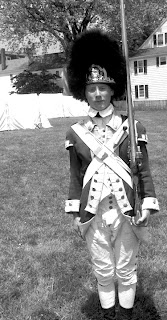
Abduction is a popular storytelling device when it comes to historical romance, which isn't surprising since you can trace its place in romance literature right back to the Abduction of Persephone.
When you're talking historical romance set in England or Wales, abductors - and elopers, for that matter - are usually racing to Gretna Green in Scotland to take their vows.
Gretna Green was the Vegas of its day, in terms of quickie marriages. The marriage laws of England and Wales, requiring amongst other things parental consent for marriages of those under 21 years of age, did not apply in Scotland and Gretna Green was right across the border.
 |
| Photo by Niki Odolphie from Frome, England |
But things that can seem romantic in fiction are often
far from it in real life.
Edward Gibbon Wakefield, who is apparently something of a hero to New Zealand, tried his hand at heiress abduction in 1826.
He happened to hear of Ellen Turner, a beautiful
16 year old heiress, from an acquaintance who mentioned her as being a neighbor. So Wakefield moved to her neighborhood, learned the family's circumstances and habits, and then appeared at Ellen's school with a letter informing the headmistress that Ellen's ill father had taken a turn for the worse and the girl must accompany him at once.
This was entirely plausible - her father
was sick, in an age of primitive medicine sudden deterioration was not uncommon, and a friend or servant would often be asked to carry an important letter (there being no FedEx service or the like).
So Ellen was packed off in Wakefield's carriage.
Which headed north to Scotland.
Now alone with her, Wakefield told the teen her father's business had collapsed, sheriff's officers were in pursuit of her family (for debt), and only
through marrying him could she hope to save her father from jail and her family from the poor house. He said he would use his (nonexistent) fortune to save them, but only once he and she were wed.
Remembering that she was a sheltered 16 year old, in an age when women of her class were not taught anything about business and economics, trapped in a small space with a stranger - and Wakefield was known for being a smooth talker, it's pretty easy to see how she would come to believe him over the many hours to Gretna Green.
This is Wakefield & Ellen's marriage license:
Successfully married, Wakefield informed the Turners where to send his checks and promptly took his new wife off to France, where he thought he would be safe from any repercussions. He was wrong. Ellen's family contacted the French police.
Extradited, Wakefield stood trial at Lancaster Assizes, was convicted of abduction and sentenced to three years imprisonment.
This had no affect on his marriage, which was still valid.
An
Act of Parliament was obtained to annul the marriage, so Ellen finally could be free.
(Yes, an
Act of Parliament. You couldn't get out of a marriage without one. So those Regency romances you read with divorce treated as if it were nothing? Yeah. Not happening.)
Just so you know, some time after his release from prison, Wakefield relocated to the Australian colonies and did something more honorable with his life.
So why is today's post about heiress abductions?
Because today in Salem Massachusetts history: October 25 1736 a Mr. McIntosh is bound at Salem court for trial, charged with attempting to abduct his two nieces, who are heiresses, and carry them off to England.
Heiress abductions happened in America, too.
Isn’t it cool when truth and fiction converge?

































